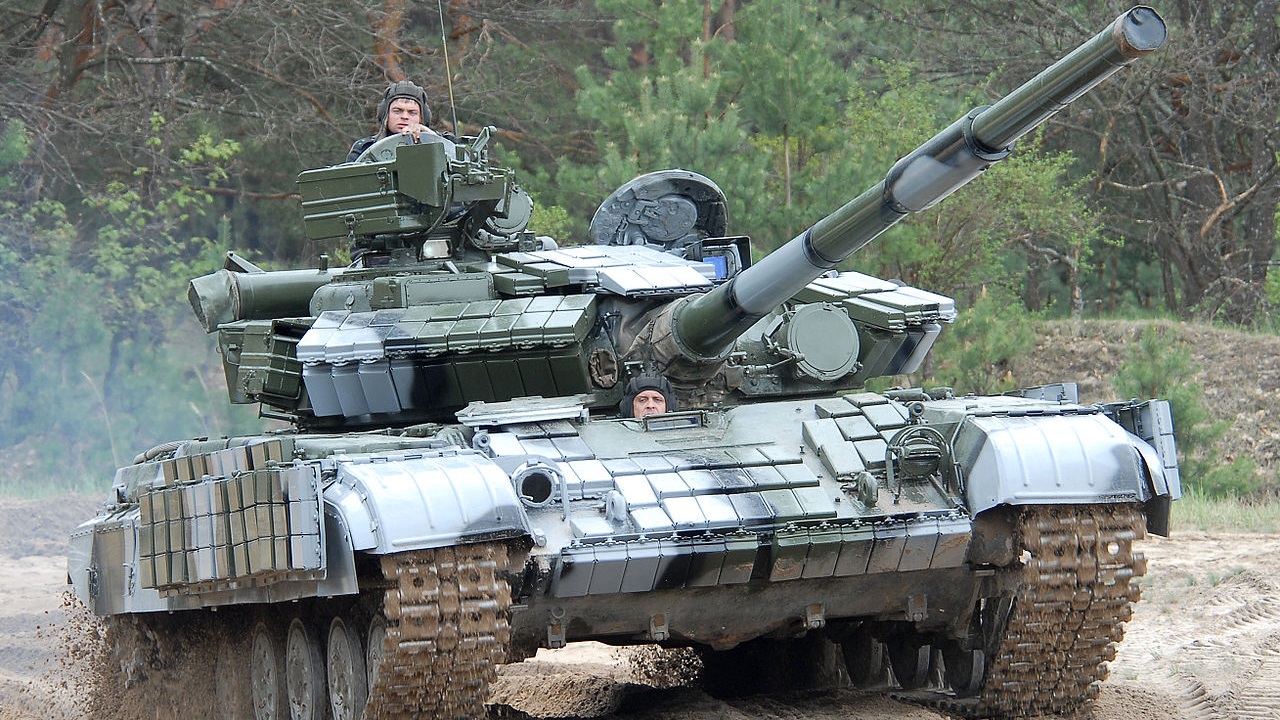Inflatable Tanks And Other Vehicles Deployed in Ukraine – During the Second World War, a number of deception campaigns were employed to fool the enemy into thinking that a foe’s military force was larger in size.
Most famously, the Allies created a phantom army that was “equipped” with inflatable tanks and other vehicles that appeared quite real from the air.
Similar tactics were later employed as the Allies liberated France and Western Europe.
What worked for the Greatest Generation in World War II is now being tried again by the fighters in Ukraine – and likely with help from a Czech-based company that produces inflatable fake armaments that can be deployed as decoys.
The firm Inflatech is currently making more than 30 different inflatable military decoys that range from tanks and armored vehicles to aircraft and howitzers.
The company even makes a decoy version of the T-72 main battle tank as well as the U.S.-made HIMARS mobile rocket launcher – a weapon platform that has been considered a high-value target by the Russian military.
The company hasn’t confirmed that Ukraine is the destination for its products, however.
Originally developed for training, these inflatable vehicles have certainly found another use in fooling the Russian military.
Blowing Up Military Hardware
Each of the decoys is made of synthetic silk and can be packed into sacks that two to four soldiers can carry, deployed in the field, and inflated within 10 minutes.
The decoys can further be equipped with a heat generator to create a thermal footprint and even appear on radar.
These aren’t exactly light, however. Even without the heat generator and inflator, a full-sized tank decoy can weigh around 43 kg or close to 100 pounds.
Yet, these are highly detailed and even on the ground from a short distance appear quite convincing.
Such inflatable decoys can cost from around $10,000 to $100,000 and could be employed to fool an enemy into wasting an even more expensive missile to attempt a strike. It also can help protect high-value equipment such as the HIMARS – which costs around $5 million for each launcher and carrier.
“If I force the enemy to destroy a thing of mine by using something which is four times, but in reality, it could be 20 times more expensive, then you are the winner economically,” Inflatech Chief Executive Vojtech Fresser told reporters, and added that he would prefer to make toys for children – but the decoys could help make the world, including Ukraine, safe again for kids.
Inflatech, which is based in the northern town of Decin, has been producing the decoys for years but saw its business pick up sharply in the past year following Russia’s invasion of Ukraine even as the company won’t confirm that any have headed to the frontlines.
The company produces up to 50 decoys a month and has sold its products to a number of NATO member nations.
All of its exports need Czech government approval.
But it is hard not to expect these are already deployed in Ukraine. Perhaps soon we’ll see a Russian drone try to destroy one of the decoys.
MORE: F-35 – The Best Fighter Jet Ever?
MORE: SR-72 – A Mach 6 Bomber?
MORE: Su-57 – Is Russia’s Stealth Fighter Doomed?
Author Experience and Expertise:
A Senior Editor for 19FortyFive, Peter Suciu is a Michigan-based writer. He has contributed to more than four dozen magazines, newspapers, and websites with over 3,200 published pieces over a twenty-year career in journalism. He regularly writes about military hardware, firearms history, cybersecurity, politics, and international affairs. Peter is also a Contributing Writer for Forbes and Clearance Jobs. You can follow him on Twitter: @PeterSuciu.

